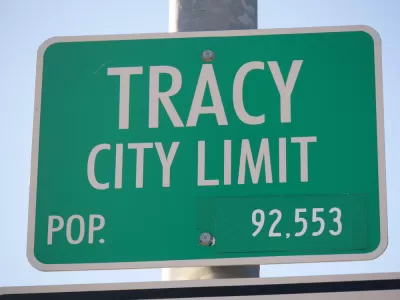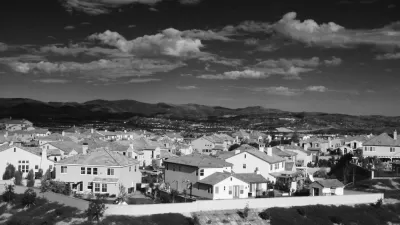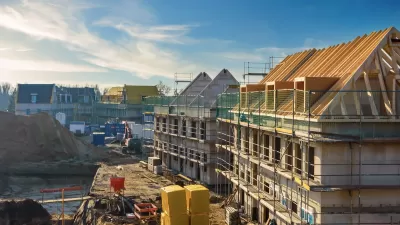Despite the environmental effects of exurban sprawl, Northern California's housing shortage is being alleviated on the extreme edges of the San Francisco Bay Area.

J.K. Dineen reports on a trend that has picked up where it left off with the subprime mortgage crash during the Great recession:
Even in the midst of a climate crisis, the Bay Area’s skyrocketing housing costs are pushing families into far-flung suburbs like Tracy. And the American dream of a single-family home coupled with cities’ restrictions on building multifamily rentals and condos means “exurbs” continue to thrive despite state and local officials’ recognition that they exacerbate climate change.
The example of the development Tracy Hills, located in the city of Tracy located over 60 miles east of San Francisco and 20 miles east of Livermore, is cited to exemplify the resurgence of exurban developments in the Bay Area.
The majority of buyers at Tracy Hills are families who work in the East Bay or Silicon Valley, but are priced out of those communities, said John Palmer, development manager for master developer Integral Communities Homes. Prices for the planned community of 4,700 homes start around $500,000 and top out just above $700,000 — well below the $850,000 median price of a single-family home or condo in the nine-county Bay Area.
Meanwhile the entire city of Tracy stands as a testament to the growth patterns of recent decades, according to Dineen. The population of the city has grown from 18,500 in 1980 to over 90,000 today. The population is projected to rise to 125,000 by 2035.
FULL STORY: Despite climate crisis, California continues to embrace exurban sprawl

Study: Maui’s Plan to Convert Vacation Rentals to Long-Term Housing Could Cause Nearly $1 Billion Economic Loss
The plan would reduce visitor accommodation by 25,% resulting in 1,900 jobs lost.

North Texas Transit Leaders Tout Benefits of TOD for Growing Region
At a summit focused on transit-oriented development, policymakers discussed how North Texas’ expanded light rail system can serve as a tool for economic growth.

Why Should We Subsidize Public Transportation?
Many public transit agencies face financial stress due to rising costs, declining fare revenue, and declining subsidies. Transit advocates must provide a strong business case for increasing public transit funding.

A Visual Celebration of Manhattan’s Chinatown Elder Community, Through Food
Lanterns, cafeteria trays, and community connection take center stage in this stunning photo essay.

How to Make US Trains Faster
Changes to boarding platforms and a switch to electric trains could improve U.S. passenger rail service without the added cost of high-speed rail.

Columbia’s Revitalized ‘Loop’ Is a Hub for Local Entrepreneurs
A focus on small businesses is helping a commercial corridor in Columbia, Missouri thrive.
Urban Design for Planners 1: Software Tools
This six-course series explores essential urban design concepts using open source software and equips planners with the tools they need to participate fully in the urban design process.
Planning for Universal Design
Learn the tools for implementing Universal Design in planning regulations.
City of Santa Clarita
Ascent Environmental
Institute for Housing and Urban Development Studies (IHS)
City of Grandview
Harvard GSD Executive Education
Toledo-Lucas County Plan Commissions
Salt Lake City
NYU Wagner Graduate School of Public Service





























